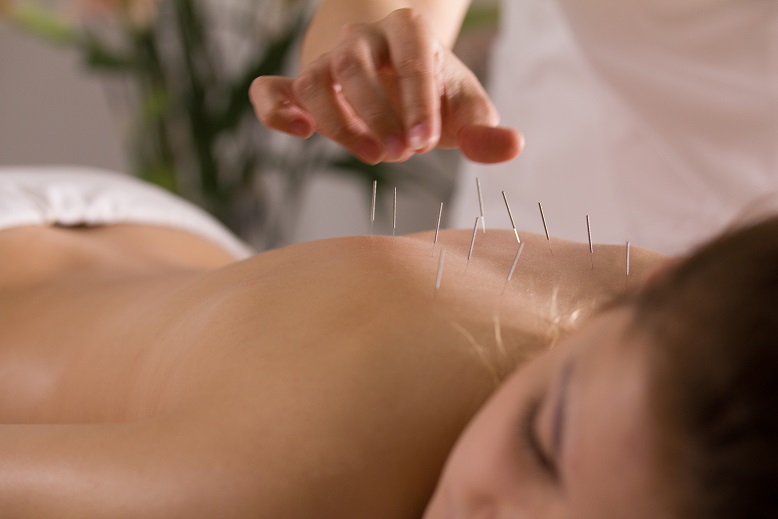Generally used to describe medical treatments that fall outside of mainstream therapies, alternative medicine covers a fairly broad range of treatments that includes everything from acupuncture to Chinese herbal medicine to homeopathy and more. Although regarded as unorthodox by practitioners of traditional Western medicine, over half of the adult population in the United States claims to use some form of alternative medicine.
Alternative Medicine#1: Acupuncture

A practice that dates back more than 2500 years, acupuncture has gained much wider acceptance in the past few decades. Indeed, a recent study found that approximately 3.5 million people received acupuncture treatments over the past year.
By using fine needles at specific areas of your skin, acupuncture treats a number of health issues from cancer to autoimmune diseases to back pain to migraines depression and even infertility.
The needles are used to stimulate nerve-dense areas of your body to affect different bodily functions. Wherever a needle is inserted, it results in a slight injury, which causes the body to respond by increasing circulation or reducing pain or stimulating the immune system. The goal is to insert at the body’s energy pathways or meridians to treat the underlying cause of the pain. In essence, acupuncture increases the flow of oxygen and blood throughout your body to trigger it heal itself naturally.
One of the reasons acupuncture has gained wider acceptance in recent years is that it can treat things like chronic pain without the use of opioids. With its drug-free approach to pain relief, acupuncture bypasses many of the dangers of prescription drugs.
Acupuncture sets itself apart from western medicine by treating the cause of the affliction rather than the symptoms. While traditional medicine may treat a migraine with medicine, an acupuncturist treats the root cause of the migraine to stop it from recurring. Essentially, acupuncture restores the body’s energy system, so it can use its own natural ability to heal itself.
Nowadays, acupuncture is usually adopted as part of an overall approach to healing. For this reason, it usually accompanies other conventional treatments instead of replacing them.
Alternative Medicine#2: Chinese Herbal Medicine

Chinese herbal formulas use naturally occurring ingredients to aid the healing process. Commonly, they are prescribed as teas that are either precooked at a Chinese herbal pharmacy and vacuum-packed or prepared at home. Additionally, they come in the form of tea tablets or pills or in powder form, which can be mixed with liquid.
There are salves, soaks and liniments which can be helpful for skin conditions, yeast infections and muscle pain among other external conditions.
In China, hospital have administered Chinese herbal formulas to their patients in a refined form intravenously for many years. For example, many cardiac patients receive natural herbal formulas in IV form instead of chemically created digitalis.
Herbal medicine has also proven to be effective at lowering cholesterol levels. For this reason, some patients avoid taking synthetic statins by drinking a daily Chinese herbal tea along with recommended diet and lifestyle changes. Furthermore, practitioners often combine acupuncture and Chinese herbal treatments because of the synergistic effect they have on many health conditions.
Alternative Medicine#3: Homeopathy
Homeopathic Medicine is a branch of medicine that espouses a more natural approach to the treatment of illness. In addition to a range of medicines derived purely from natural substances such as plants, animals and minerals, many health and wellness centers use homeopathy as part of a holistic approach that combines both eastern and western treatment modalities.
Similar to acupuncture and herbal therapy, these treatment centers also believe in addressing the root cause of disease instead of just the symptoms. Often, they devise programs to help patients manage chronic disease in order to elevate their quality of life. They types of conditions they may treat include everything from cancer to arthritis to substance abuse.
A big part of a wellness center’s mission is to educate patients by teaching behaviors that foster wellness along with using their skills and training to complement the work of other health care providers. They look for ways to empower people naturally to engage in healthy, preventative self-care behavior that improves their physical well-being. For this reason, nutrition and lifestyle changes form an integral part of how wellness centers boost the health of both individuals and communities. Essentially, this kind of holistic care arose out of the need to cope with challenges of chronic illness and lifestyle diseases in a natural way.

